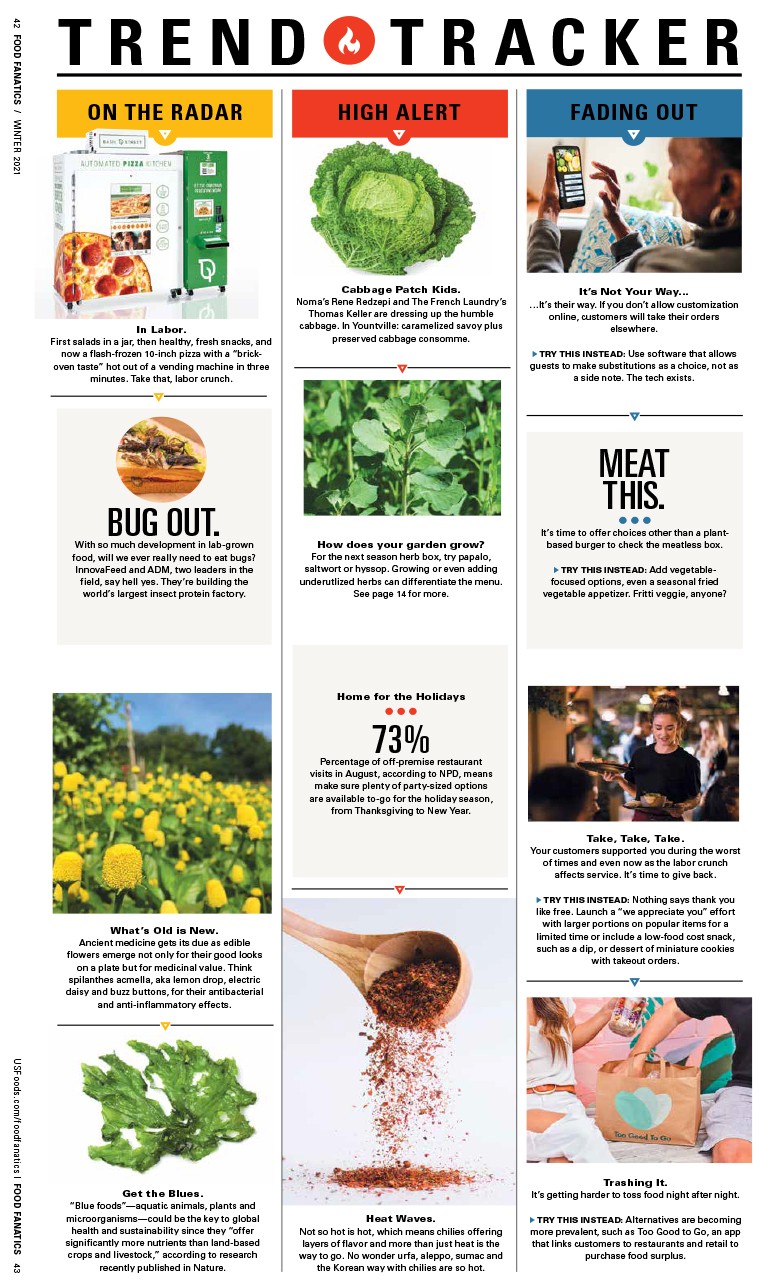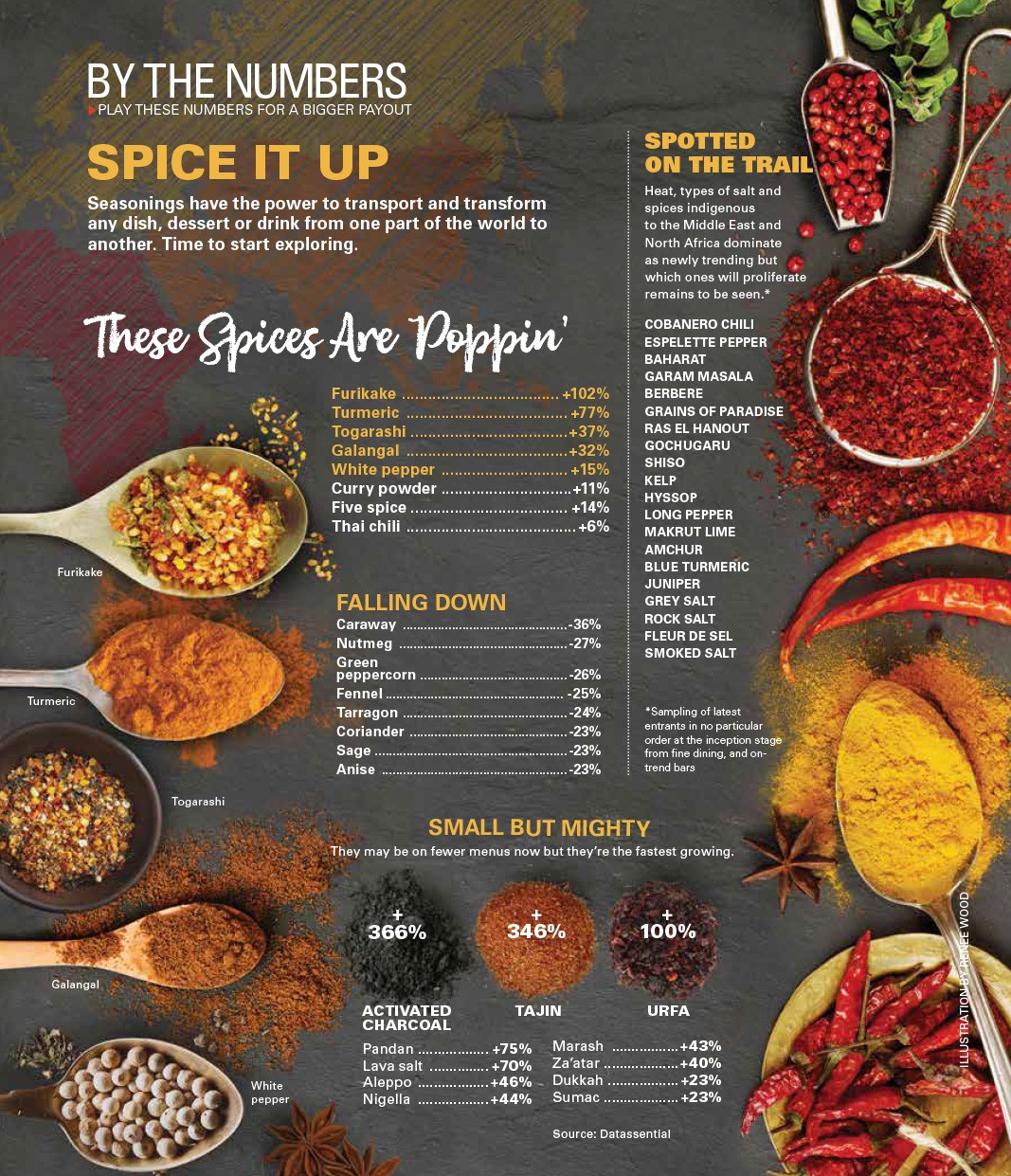All Buttered Up
The benefits of infused and flavored butters spread beyond bread
Butter has traveled a bumpy path in the American diet. Always thought of as a staple, it’s periodically shunned as a foe of arteries and often subject to the whims of health fads.
Today, restaurants are presenting a more modest, balanced side of butter. It’s less of a culinary crutch and more like a high-quality seasoning. Check out how chefs are playing with butter’s chemistry and flavors.
Smokey Subtlety
Smoke from wood imparts a flame-grilled flavor that’s easily lapped up by butter. Alex Figura, chef-partner at Lower48 in Denver, smokes butter to give depth and a meaty, rustic flavor to mushroom risotto, fava bean and chickpea risotto and other vegetarian dishes. Smoked butter is also a regular accompaniment with the restaurant’s sourdough bread and spicy radish or turnip dishes.
Figura makes butter from scratch by smoking housemade sour cream and then churning it into butter. For a shortcut, start with a high-quality, commercial butter and applewood or hickory chips but not oak because it burns hotter. Keep the temperature at or below 160 degrees to avoid melting the butter.
Bring the butter to room temperature and whip it before serving it with bread. “You want to aerate the butter to make it fluffy and spreadable—almost like soft serve ice cream,” Figura says. For unsalted butter, add a few pinches of flaky sea salt at service to add crunch and an extra zap of flavor.
Layer of Earthiness
Miso is not a typical ingredient at St. Cecilia in Atlanta. But Executive Chef Craig Richards digs the way miso butter works with pan-roasted radishes and snap peas. He credits Sous Chef Mike Pitts for the introduction. “(Pitts) has extensive experience in Japanese food. We decided on it because it adds an earthiness and natural salinity to the dish.”
Miso butter is a super simple recipe that comes with one warning: Start with room temperature butter and don’t overblend. Otherwise, the butter will heat up and break.
“We only use it for this one dish, but I can see it being a very good finishing butter for a seafood pasta, (such as) spaghetti with crab, chilies, garlic and miso butter,” Richards says.
Toasty Nuttiness
Brown butter is butter amplified. As it’s heated, the butter is infused with a distinct, toasty and nutty note that enriches the flavor of any dish. The most concentrated flavor is found in the browned milk solids.
Dayne Womax, chef-owner of Brown Butter Restaurant in New Orleans, maximizes the yield of crispy, browned butter solids by adding powdered milk. When the milk solids in hot butter begin to separate and turn golden, he adds a ratio of one cup of powdered milk per pound of butter, which nets nearly an equal amount of brown butter solids.
Womax uses the solids in countless dishes at the restaurant—whisked into vinaigrettes, sprinkled on salads, folded into root vegetable purees or gelato. He also makes brown butter cream soda syrup with the solids. “They’re awesome in savory or sweet applications,” Womax says.
Colleen Rush is a freelance food and travel writer, and the author of "The Mere Mortal’s Guide to Fine Dining."
Fat ChancesDump the one-size-fits-all approach toward fat. Animal fat: An alternative to hydrogenated oils (although less shelf-stable), duck fat or tallow (beef fat) is a favorite for french fries. Rendered chicken fat is a good base fat to wilt vegetables or brown flour for gravy, roux or soup. Coconut oil: Billed as a panacea for everything from chapped lips to Ghee or clarified butter: Chefs like clarified butter for shallow frying and other high-heat cooking methods because the smoke point (around 450 degrees) is significantly higher than butter and other cooking oils. Lard: Some chefs say lard is ideal for frying tortilla chips and producing crispy, evenly browned fried chicken. Pastry chefs swear by pure leaf lard for flaky pastry crusts. Rice bran oil: A source of antioxidants, free of common allergens and heart healthy, rice bran oil is winning over chefs. Foods deep-fried in this fat absorb up to 20 percent less oil. |



